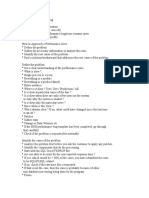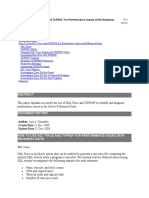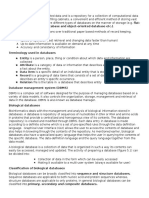0% found this document useful (0 votes)
9 views11 pagesPL - SQL Tuning With PL - SQL Hierarchical Profiler
The document discusses the PL/SQL Hierarchical Profiler, a tool for analyzing and tuning PL/SQL code in Oracle databases. It outlines the setup process, usage, and how to generate reports from profiling data, emphasizing its importance for developers and DBAs. Additionally, it mentions alternatives for users with limited privileges, such as the DBMS_PROFILER package.
Uploaded by
RamCopyright
© © All Rights Reserved
We take content rights seriously. If you suspect this is your content, claim it here.
Available Formats
Download as PDF, TXT or read online on Scribd
0% found this document useful (0 votes)
9 views11 pagesPL - SQL Tuning With PL - SQL Hierarchical Profiler
The document discusses the PL/SQL Hierarchical Profiler, a tool for analyzing and tuning PL/SQL code in Oracle databases. It outlines the setup process, usage, and how to generate reports from profiling data, emphasizing its importance for developers and DBAs. Additionally, it mentions alternatives for users with limited privileges, such as the DBMS_PROFILER package.
Uploaded by
RamCopyright
© © All Rights Reserved
We take content rights seriously. If you suspect this is your content, claim it here.
Available Formats
Download as PDF, TXT or read online on Scribd
/ 11



















































































